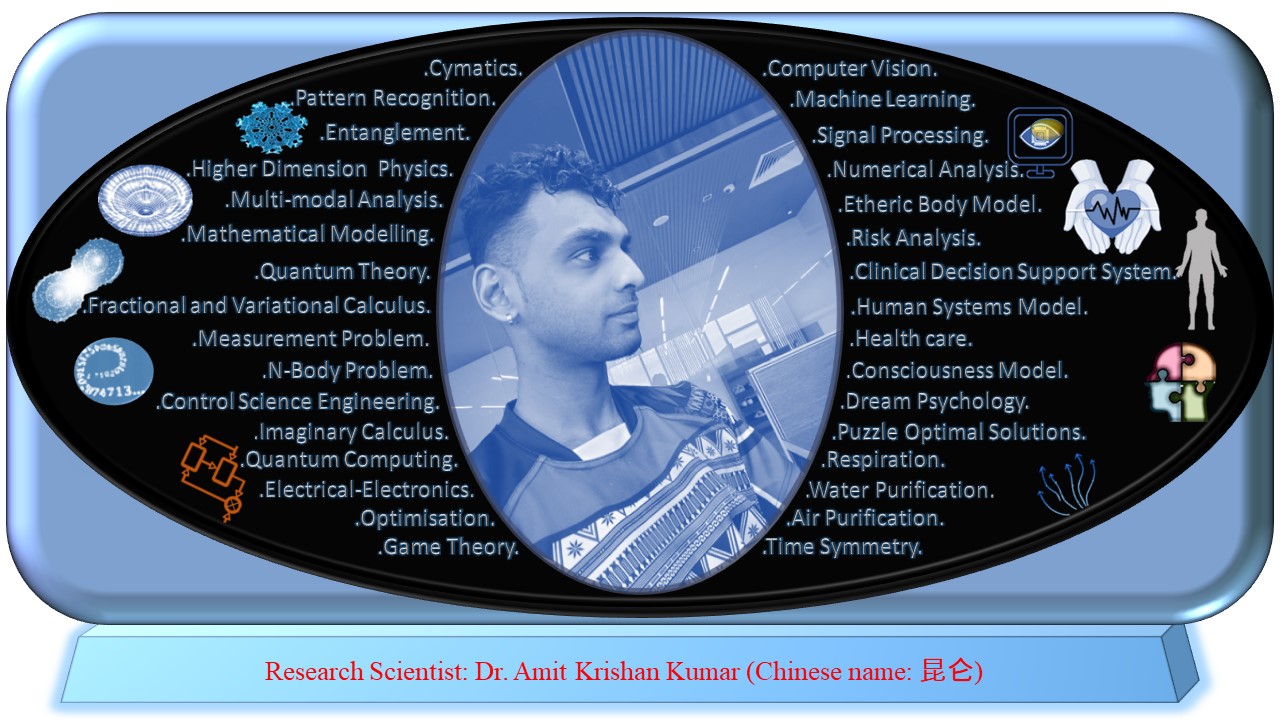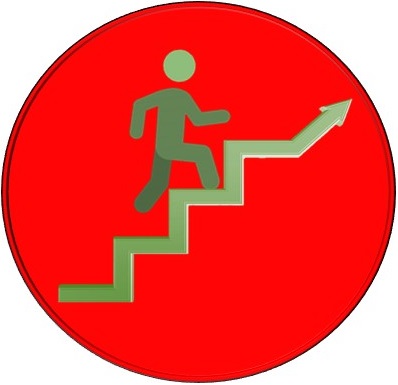Amit Krishan Kumar's research interests encompass a wide range of fields, including pattern recognition, cymatics, dream psychology, electrical-electronics engineering and design,
and the entanglement of quantum multimodal states. He is also deeply engaged in exploring the laws of higher-dimensional and reversible universes, as well as developing mathematical
models of the human body that focus on disease identification and biochemical systems theory. His work in quantum theory addresses key challenges such as the measurement problem, the
N-body problem, and the application of imaginary order calculus
His innovative approach integrates advanced mathematical techniques, including fractional calculus, calculus of variations, and game theory, to enhance control science engineering,
optimization, clustering, and classification. His primary focus is on applying AI-based optimal solutions to pattern recognition, utilizing both supervised and unsupervised learning
methods. He also explores practical applications in computer vision, especially for improving road safety, healthcare, and environmental monitoring.
In the realms of cymatics and human body systems, he employs machine learning, signal processing, risk analysis, and clinical decision support systems (CDSS). His research involves
human systems modeling, time symmetry, bimodal systems, and numerical analysis. His work is specifically applied to areas such as respiration, water purification, quantum gravity,
air purification, consciousness modeling, etheric body models, and the cymatics of N-dimensional sounds. Through this multidisciplinary approach, he aims to gain deeper insights
into the fundamental nature of reality and develop innovative solutions to enhance human health and well-being.
| Research Questions and Theories
|  |
The research questions are; 1) does disease enter a subtle body like vital-breath body before showing symptoms to the physical body; 2) can healing of the etheric elements
heal the incurable; how does the breathing patterns, breathing techniques, respiratory disease, and respiratory flow help in modelling the etheric body. Many disease targets the lungs,
therefore, it is essential to have better understanding of the respiratory dynamics and disease progression via mathematical and numerical models. Quantum-inspired approach to bimodal data
especially the very unique quantum entanglement, provides answers to many questions especially when considering immeasurable quantities.
The quantum-inspired algorithm goes deeper and applies the fantastic laws of the quantum world to data science where it links the objective truth with the subjective and the
dimensional truth for different frames of reference.







